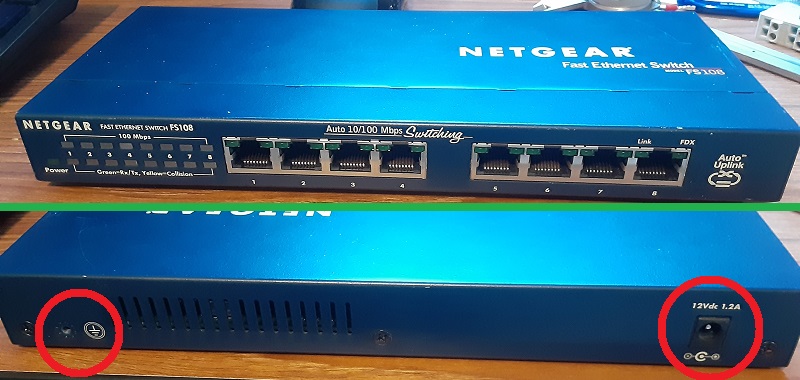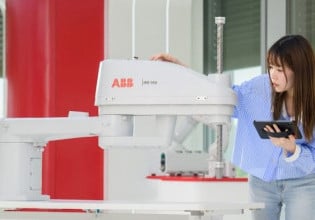Managing Networks | Why Do I Need an Industrial Grade Switch?
I could run down to the local box store or internet marketplace and buy a 5-port switch for less than 20 dollars, or invest in an industrial switch for hundreds. Why would I choose the industrial switch?
In every aspect of industrial engineering, there is a selection process that begins with examining all possible options, weighing the pros and cons, and selecting the least expensive option that will be a viable candidate. This is a great solution for the most part, but it’s important to understand every detail behind the scenes of each decision. Some parameters may not be clearly obvious.
When Do I Need a Network Switch?
Some standalone automation controllers have a couple of network ports, one might connect to a local HMI, the other connects to a computer used for programming. If this is sufficient, there is no need for extra hardware.
Many networkable devices these days include two network ports, allowing you to create a daisy chain or device level ring (DLR) network. In these cases, one device connects to the next, which connects the next, allowing us to minimize both cables and extra hardware.

Figure 1. A set of general unmanaged industrial Ethernet switches.
However, when facing the reality of an industrial network, the truth is more likely that your equipment is a combination of several generations and product lines of tech. They probably don’t all have two Ethernet ports. They probably don’t all have identical communication cards allowing these convenient DLR networks.
If you face this situation, you’ve probably used network switches to negotiate the connections between a single device and the rest of the network. When you need to connect a PLC to a few VFDs, an HMI, and the rest of the network, you probably don’t have many other options, forcing you to invest in a network switch to solve the routing dilemma.
Can I Use a General Purpose Switch?
Functionally speaking, yes, you can use a general-purpose network switch to supply your needs, since most low-cost commercial and home-use internet switches can easily pass the bandwidth and data rate required for industrial equipment. I’ve used many switches that were laying in a used equipment box in my office and connected my benchtop network without a single problem.

Figure 2. The front (top) and back (lower) view of a general non-industrial Ethernet switch. The power rating and the grounding screw terminal can be seen in the lower half of the picture.
But the bigger question is this: if it works, why do they make industrial Ethernet switches, and which is a better choice?
There are a few factors that set industrial switches apart from commercial and residential grade devices, including power supply, mounting style, dust ingress, and form factor.
Power Supply
Most residential-grade switches use a power adapter from a standard 120 volt outlet to provide a DC output of around 12 volts. This is simply because most homes and offices don’t have power networks providing that DC voltage.
Not so for industrial applications. It’s usually far more common to find a cabinet with a 24 VDC power supply, or even two of them for redundant measures.
Not only is the power input rated at 24 volts DC for these industrial-grade switches, they often have power inputs labeled 1+/1- and 2+/2- or similar, just in case one supply is overloaded and shuts off, the network will still remain solidly functioning. While a power supply may knock a couple of components offline (obviously not good in itself), a network fault can cause disruption to an entire facility.

Figure 3. Not all industrial switches have dual power inputs, but power reliability may be a key factor in the decision to ‘go industrial’.
Mounting Style
The mounting style and form factor can probably be considered in a single point. Most home or office-grade switches are made to sit on a counter or attach to a wall. They’ll often have an elongated hole on the back for a screw to hang them on a vertical surface. This isn’t very helpful in a steel cabinet. Not only do you have limited space, you can’t just stick a sheetrock screw into a cabinet wall. There are considerations with grounding and proximity to cable trays to consider.
Most industrial switches use a DIN rail mount clip, allowing you to place them in the best location to avoid interference of both signals and physical obstacles.
Regarding the form factor, power connections are usually on the top or bottom, with the connection ports and any other reset, etc. buttons placed on the front, facing the technician when the cabinet is opened. Home-grade switches often have those reset buttons on the backside, along with the power connector.
Imagine needing to remove the component from the rail, and disconnecting all of the neatly arranged cables just to access critical buttons.
Dust Ingress (IP Rating)
Ingress protection is not a big deal in a clean office. But turn to a setting involving sawdust or metal particles, and even a small opening can be an open invitation for failure. Not only openings, but many standard switches use a fan for cooling, drawing air in across the PCB components to keep operation more efficient.
Some industrial switches are not entirely sealed, meaning you can’t be careless about placement, but they are designed specifically to withstand harsher environments that would destroy a typical network switch.

Figure 4. Dust ingress, while not always entirely preventable without an IP67 rating, can be minimized with proper installation (this is an IP30 switch).
Some are indeed rated as IP67 with fully sealed cases and ports, often using specialized cable terminators. This rating will certainly add to the cost, but it allows the switch to be installed in hostile environments. Most of these devices are not the DIN-rail mount, but rather are designed for installation directly on a machine. They usually have a longer, thinner profile with screw mounting holes at the top and bottom.
Which Switch Should I Use?
I would recommend that, if you plan to install the switch for use in an actual industrial environment, you should spend the extra money and buy one that is designed for industrial use. On the other hand, if you are designing a benchtop system at home or in the break room, just to get some extra practice in control automation programming, by all means, use the spare switch you have sitting at home.
The function of network switches is largely the same, regardless of the environment, but if you are counting on your device to work under extreme circumstances, do not sort your decision criteria on a low-to-high price filter. You get what you pay for.






